Valve for toilet: types of valves and features of their installation
One of the most unpleasant situations that happen at home, in the office, at the enterprise, etc., is not without reason that failure of the toilet fittings is recognized. You must admit that so much tangible inconvenience will not be created by a torn crane or a burned out lamp.
This problem can be immediately eliminated if you know how to choose and correctly install a toilet valve. We will tell you in great detail which device is needed to close the flow of water into the tank, and which one to drain it from there.
Here you will find complete information about the types of plumbing valves, the rules for their selection depending on the design of tanks and installation methods. In our proposed article, reliable information, supplemented by useful schemes, photos and videos.
The content of the article:
Types of toilet flaps
Most common type toilet fittings - separate. It is used on all the most popular models of toilet cisterns and includes mechanisms for draining and collecting water, which are installed and work autonomously.
Exhaust valves can be divided into types according to the method of actuation:
- Push. Triggered by pressing the button.
- Exhaust. The drain mechanism is brought into action by raising the stem locking the drain hole.
- Lever. The lever itself can be placed on the tank or below, near the toilet. The device is triggered by pressing the lever.
The lever system is mainly used in public restrooms because of the budget price, simple design and maintainability.

Push type devices, in turn, can also be divided into types:
- single-level exhaust valve (with single-mode discharge) - equipped with one button, when pressed, all contents are drained from the tank;
- single-level valve with stop mode - in such a device, the first pressing leads to the supply of water to the toilet, the second stops draining;
- exhaust valve two-level (two-mode) - the drain button consists of two keys, one of which drains part of the water, the second completely empties the tank.
Models of shutoff valves can be divided by the method of water supply: for lateral connection and for lower water inlet.
As well as structural features:
- Piston device. The inlet mechanism has a piston which is driven by a lever. A gasket installed at the end of the piston blocks the flow of water into the tank.
- Diaphragm valve. This is the most modern device. Instead of a piston gasket, a silicone or rubber membrane is installed in it. It allows you to silently and quickly collect water, but is very sensitive to its purity - this is the main drawback that often leads to malfunctions.
In addition to separate valves, there is also a combined valve design in which two valves - the inlet and the shutoff - are combined into one system. The work of one depends on the health of the other.
Installation and armature adjustment may cause some difficulty for the layman. In the event of failure of one of the elements of the system, it is necessary to completely change the entire mechanism.
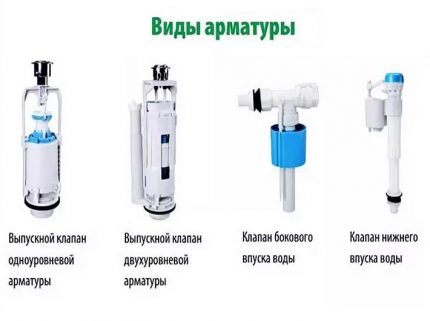
The principle of operation of the drain and filler valve
The principle of operation of the filling valve is based on the action of the float, which, when filling the tank with water, rises and drives the valve through the rod.
As soon as the water reaches a certain level, the valve shuts off the water.
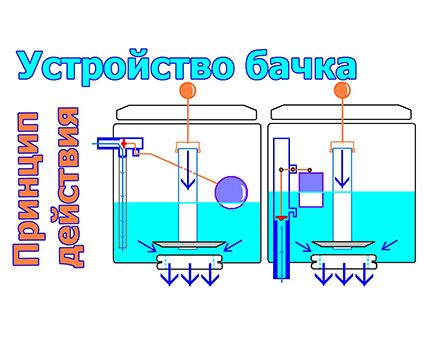
In calm condition drain mechanism prevents the release of water, but works as soon as the button is pressed.
At the same time, its design provides protection against overflow. Protection is necessary in the event of a malfunction of the toilet float valve, which suddenly stops blocking the water. Then, filling the tank, water flows out and floods the room.
To prevent this from happening, a drain pipe is provided in the body of the drain valve. If the fittings are working properly, then the end of the tube rises above the water level.
In the event of an inlet valve malfunction, the tip is below the water level, and then excess liquid enters the pipe and drains into the toilet.
The flush tank fitting is a set of devices with valves designed to control the flow, set and withdrawal of tap water from the tank:
General characteristics of valves
Drainage and shutoff valves must withstand sudden pressure drops. On average, the operating indicator is from 0.4 to 15 atm.
The water temperature at which the device will work normally is in the range from 2 to 45 ° C. The working resource is about 150-200 thousand cycles.
As a material for the production of a check valve for a toilet bowl, use:
- High pressure polyethylene. The denser this material, the higher its strength. Moreover, an increase in density reduces its impact resistance at low temperatures.
- ABS plastic (chemical compound acrylonitrile butadiene styrene). The material is resistant to mechanical stress, abrasion, aggressive chemicals, insensitive to temperature extremes.
For each valve model, the manufacturer indicates the permissible height of the tank, it can be from 295 to 500 mm.
It is also important to pay attention to the connecting size - if it does not match, use the adapter ring.
Installation and adjustment of the intake valve
The purpose of the inlet valve for the toilet is to regulate the flow of water into the toilet bowl. The valve provides silent and quick filling: about 7 liters in 20–45 seconds.
It is equipped with a filter with a mesh size of about 200 microns. In case of clogging, it can be cleaned and washed with water without removing it from the tank. The float in such a device may be open, or may be located inside the protective housing.
Reinstalling the float valve is quite simple. In models with a lower connection, the valve must be installed before mounting the tank.
A rubber gasket is put on the device’s tube, turning its conical side to the hole in the tank. Then the valve is pushed into the water inlet, put on a plastic washer (if included) and fix with a nut. First tighten the nut by hand, and then tighten with a wrench.
It is very important to ensure tightness by correctly installing the rubber gaskets. In models with lateral connection, leakage protection is not so important, there the water supply is located above the filling level of the tank.
Pay attention also to the fact that tank float he didn’t touch anything, otherwise he would not be able to freely rise or fall along with the water level.

A flexible hose is connected to the water riser through a tap using FUM tape. The shut-off valve is installed without fail. If necessary, repair work, it will block the water.
Restoring the health of the float valve is as follows:
If a leak is found in the shut-off valve area, the troubleshooting steps are fixed in the following order:
Mounting and adjusting the exhaust valve
The drain valve mechanism is designed to supply water to the toilet. Manufacturers produce many different device configurations.
For example, for the economical use of water, a two-level reinforcement has been developed in which the drain can be full or partial. Single-level devices are sometimes equipped with a “stop” system, which stops the draining process as soon as the button is released.
When purchasing a device, you need to pay attention to the material from which the locking pads are made.
If earlier domestic manufacturers used only rubber, now it is increasingly being made of silicone. This material has no mechanical memory, is not deformed.
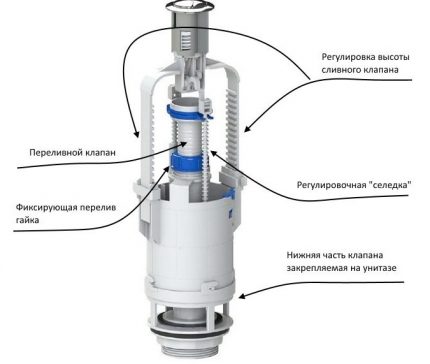
Installation of fittings in steps
If the drain mechanism is broken or out of date, there is no need to change the toilet tank - you just need to replace the faulty element.
Do you want to replace the toilet bowl with a new one? A detailed replacement guide is provided in our other article.
Even if the toilet model is out of date, the manufacturer releases a new, but suitable device. It is better, of course, that the tank and stop valves belong to the same brand.
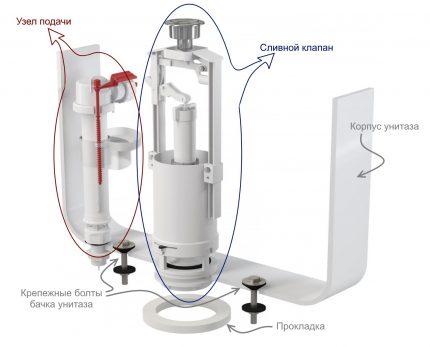
Further, the installation of the drain valve will be shown on the example of a device for dual-mode drain with a cable. Set the tank on the toilet. To do this, put the gasket 14 on the base of the valve 12.
You may also be interested in selection and replacement information.gaskets between the toilet and the tank.
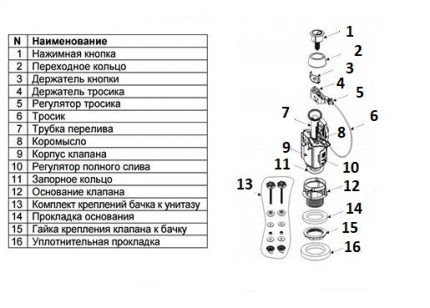
The valve is installed in the tank opening and the nut 15 is tightened on the outside, onto which the gasket 16 is then put on. It will ensure the tightness of the connection.
The bolts 13 are installed in the mounting holes in a certain sequence.
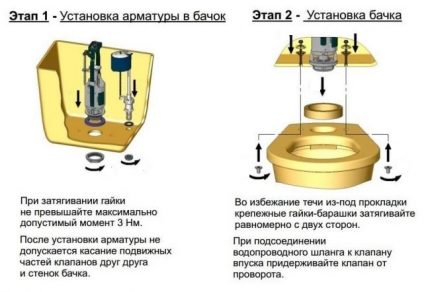
Set the cable mechanism. Its end is fixed in the beam 8 so that the plastic casing is fully engaged.
Then lower the body of the drain valve 9 into the base 12 and fix it by turning to the right. Check if the device of the walls of the tank and the mechanism of the intake valve touch.
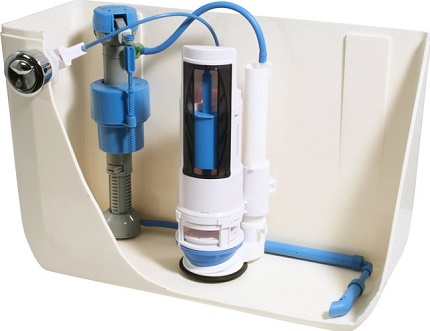
Next, adjust the height of the overflow tube 7. To do this, first turn it clockwise to remove it from the lock. After setting the required height, it is again blocked by turning it counterclockwise.
If the height of the pipe is correctly adjusted, the water filling level should not rise closer than 20 mm to the edge of the overflow pipe.
The edge of the overflow tube, in turn, in the presence of a side opening of the tank (for connecting to the water supply), should be 10 or more millimeters lower than it.
Next, fix the push button on the tank cap. A special holder is designed for this. Connect the button to the cable so that it does not twist and does not cling to the filling valve. In tanks with a non-standard hole, an adapter ring is used.
If necessary, you can adjust the level of water filling in the toilet flush tank using the settings of the inlet valve.
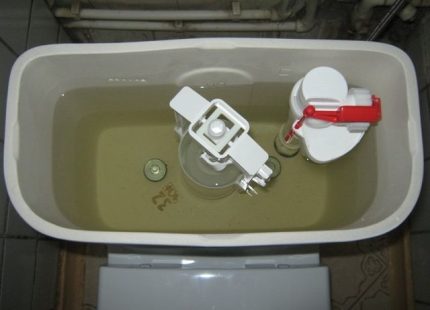
Water Drain Adjustment
You can change the amount of water remaining after a complete drain using the regulator 10 on the toilet valve body.
To increase the remainder, it is raised; to decrease, it is lowered. Adjust the valve so that the water completely drains from the tank by lowering the regulator all the way down.
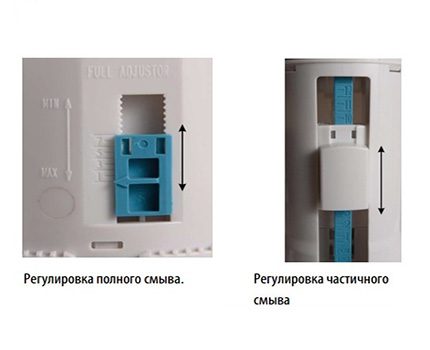
By a similar principle, a small drain is also regulated. But, nevertheless, there are some differences. In some models, the adjustment lever is freely accessible; in others, the lever must be unlocked by turning it to the right.
And then, when raising the lever, the drain volume will decrease, when lowering it, vice versa.

After installation and adjustment, the system is checked for operability - the small and large drain buttons should fulfill their functions.
When a small button is pressed, a small drain should work, a large one should empty the tank almost completely, depending on the settings.
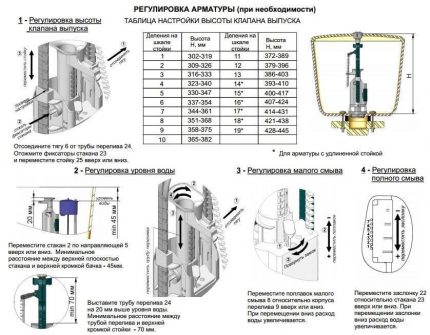
You may also find useful information on how to properly disassemble the drain tank.
Maintenance of drain and inlet fittings
Since almost any tap water contains mechanical and chemical impurities, it is necessary to flush the equipment from time to time - a locking ring, a water filter for the toilet valve.
Sand grains, deposits of salts and rust, can damage equipment.
To avoid severe contamination, the ring is washed with water. To get to it, unscrew the drain button, remove the tank cap. Pull the valve body by turning it counterclockwise.
To eliminate leaks in the area of the drain valve, it is most often required to replace it:
They clean parts without the use of aggressive detergents, such as those containing abrasive particles, organic solvents, alkaline or acidic substances.
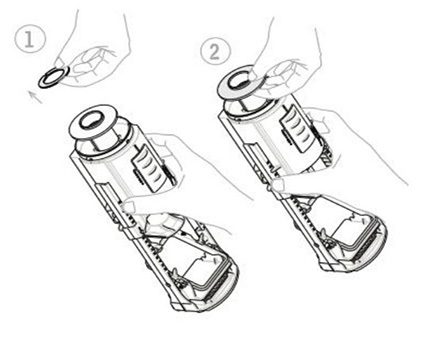
Conclusions and useful video on the topic
How the drain tank fittings work:
How to install the toilet bowl, tank, drain and fill valves:
Everyone knows the truth: if you want to do well, do it yourself. This also applies to the installation of valves for the toilet. Having understood the technical nuances, you will be able to independently install and configure the fittings.
Have you repeatedly changed the drain tank fittings and can you give useful recommendations to beginners in this matter? Feel free to share your experience. Or do you have questions about installation or adjustment? Ask them, please, in the comments below this article.

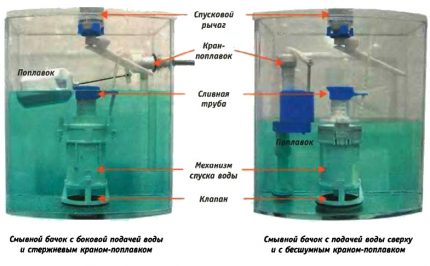
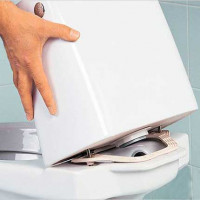 Laying between the tank and the toilet: types, purpose, installation features
Laying between the tank and the toilet: types, purpose, installation features 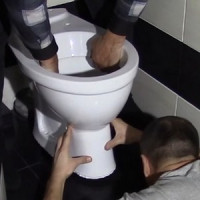 Do-it-yourself toilet installation: features of mounting toilet bowls of various designs
Do-it-yourself toilet installation: features of mounting toilet bowls of various designs 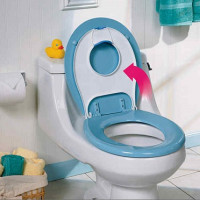 Seat toilet seat: types, selection rules and installation features
Seat toilet seat: types, selection rules and installation features 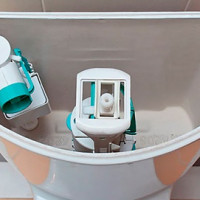 Setting up the toilet fittings: how to properly adjust the spillway
Setting up the toilet fittings: how to properly adjust the spillway  Flush mechanism for the toilet: device, principle of operation, an overview of various designs
Flush mechanism for the toilet: device, principle of operation, an overview of various designs 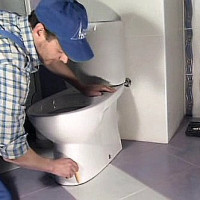 How to install a toilet on a tile with your own hands: step-by-step instruction + installation features
How to install a toilet on a tile with your own hands: step-by-step instruction + installation features  How much does it cost to connect gas to a private house: the price of organizing gas supply
How much does it cost to connect gas to a private house: the price of organizing gas supply  The best washing machines with dryer: model rating and customer tips
The best washing machines with dryer: model rating and customer tips  What is the color temperature of light and the nuances of choosing the temperature of the lamps to suit your needs
What is the color temperature of light and the nuances of choosing the temperature of the lamps to suit your needs  Replacement of a geyser in an apartment: replacement paperwork + basic norms and requirements
Replacement of a geyser in an apartment: replacement paperwork + basic norms and requirements
I tried somehow to independently change the valve for the toilet. Cursed everything in the world. Of course, the first thing I did was buy the wrong one. Well ... I took my own, took it to the store, bought exactly the same. Put! And what do you think? It flows! As I did not try, nothing worked out for me.In the end, he called the plumber from the housing office, which in 15 minutes did everything to me. For 500 rubles. So I do not recommend getting involved in an epic)
Gregory! We have the same problem! So you tell us what the plumber did and how to fix the leak?
I had to change the compact myself (tank + bowl), it is good that it was in the summer of 2018. I bought a bowl with a massive “shelf” for a tank + a tank with a side water supply “cersanit”. The supply valve is a diaphragm, the drain unit is a double button on top. The floor in the toilet is covered with ceramic tiles. He removed the old tank, the old bowl, removed the wooden pallet under the base of the bowl (the holes for fastening the new base went beyond the dimensions of the wooden pallet).
He cleaned the place of the former pallet, prepared a mixture of 3: 1 cement 400 + river sand + water = with a thick mixture filled the void “to zero”, held a thin screed and “ironed” (min of pure cement on the surface of the screed). Completely hardened and cooled surface 2 times painted over with white enamel PF.
He noted the contour of the new “sole” of the bowl and 2 holes. for fastening. I drilled 2 holes. for plastic “new settlers” (d holes - D drills = 1mm, for density). Set "zero" "new settlers." I covered the unglazed bottom of the bowl with a layer of silicone, installed (jointed the oblique drain of the bowl with the previous adapter + silicone between the holes), fixed it with screws (the bowl does not swing). Clean and dry surfaces of all joints during installation (cistern + corrugation ring + toilet bowl; mounting holes cistern + toilet bowl;
Konich., Cylindrical. rubber, ring seals, metallic. washers, fixing bolts completely and thread nuts; installation location and corrugation ring; the surface of the connection with the “body” of the tank of the drain unit and the water supply unit) is coated with silicone. Adjusted the water level in the tank in the drain unit. The union of the union nut “mother” of the flexible hose to the “father” “shank” of the shut-off valve - was sealed with FUM tape. So far, that works. Water hardness in the city (water channel from Seversky Donets) is high, filter stations are weak (in the regional city where he studied at the university, the hardness was 5-8 units lower [Ca ++ Mg ++ mEq / l]).